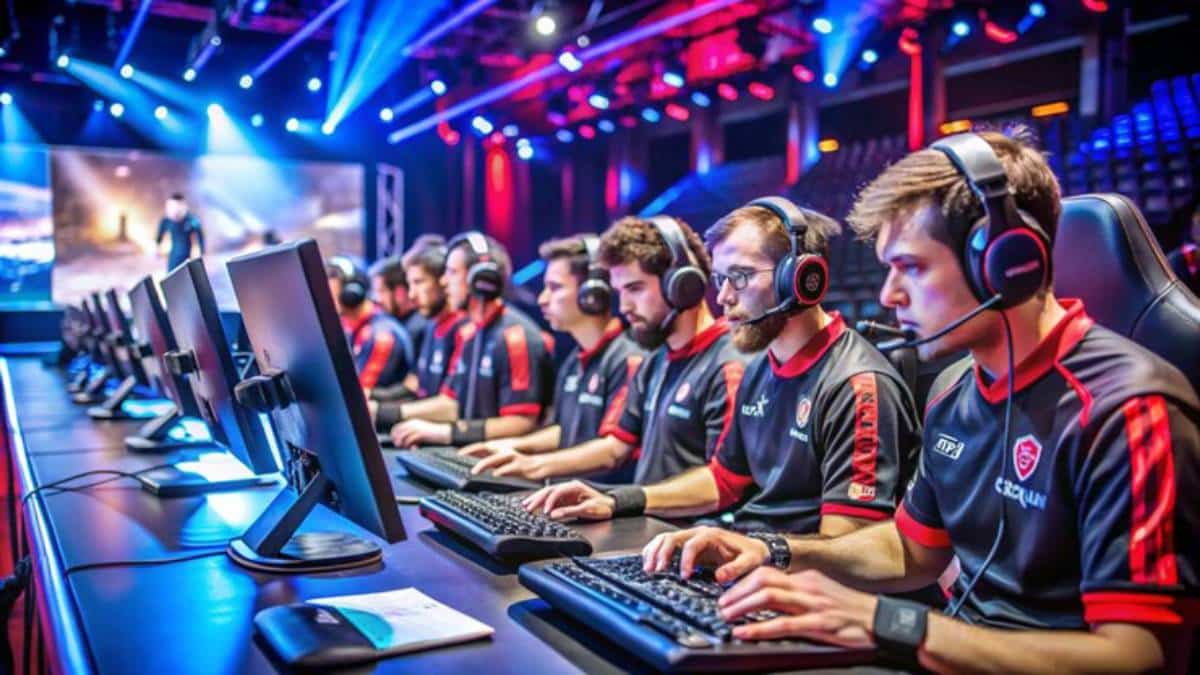
The Future of Esports Journalism in the Age of Short-Form Content
Esports is booming—but not just on the main stage. As competitive gaming becomes a billion-dollar industry, its media ecosystem grows too. Esports has changed traditional sports entertainment. Now, it is also changing how news is delivered, consumed, and shared.
Welcome to the era of short-form content. Enjoy video clips, 60-second interviews, match recaps, and hot takes. Platforms like TikTok, Instagram Reels, and YouTube Shorts offer much more than memes. They are quickly turning into key places for esports journalism in an easy-to-digest format.
But can esports TikTok journalism truly replace or complement long-form coverage? What does this shift mean for journalistic integrity, audience engagement, and the future of esports video coverage?
This article looks at how short esports news is changing journalism in gaming. It also discusses what this means for players, fans, and media professionals.
The Rise of Short-Form Media: A Digital Media Evolution
A Cultural Shift in Content Consumption
We now live in an era of information overload. Audiences, especially younger viewers, increasingly prefer content that is:
- Brief: 15–90 seconds long
- Visual-first: With minimal reliance on text
- Personalised: Algorithm-driven feeds tailored to individual interests
- Interactive: Likes, comments, shares, duets, and stitches
This trend is especially important for esports. This field is known for its fast-paced gameplay, quick memes, and viral highlight reels.
Platforms Leading the Way:

- TikTok: With over 1 billion users, TikTok’s influence on gaming culture is massive. Clips of pro matches, player reactions, and quick news updates thrive here.
- YouTube Shorts: Integrating with long-form video channels, Shorts offer creators flexibility while reaching wider audiences.
- Instagram Reels: Offers strong discoverability for esports brands, influencers, and media outlets.
These platforms have set the tone for a new kind of storytelling—quick, visual, and endlessly shareable.
What Is Esports TikTok Journalism?

Esports TikTok journalism shares news, analysis, and opinions on competitive gaming. It uses short, vertical videos to engage viewers. It typically includes:
- Rapid news updates (roster changes, event results, controversies)
- Opinion commentary or reactions
- Educational explainers (e.g., “Why this hero was banned in the final”)
- On-the-ground event snippets (backstage interviews, venue tours)
Fans can now watch a creator break down a match in under a minute. They get graphics, memes, and voice-over commentary instead of just reading a summary.
Short-form esports news isn’t just shorter—it’s designed to be mobile-native, algorithm-friendly, and emotionally engaging.
Why Short-Form Content Thrives in Esports
1. The Audience Is Already There
Esports fans, particularly Gen Z, are highly active on short-form platforms. They usually find out about patch notes, team drama, and match results on TikTok or Reels before seeing it anywhere else.
2. Speed and Accessibility
Short videos deliver headlines in seconds. Viewers don’t have to wade through long articles—they get the “what” and “why” in a visually dynamic format.
3. Amplifying Reach Through Virality

A spicy take, a post-match reaction, or a misplay clip can go viral with good editing and timing. This is something long-form content often struggles to achieve organically.
4. Lower Barriers to Entry
Aspiring journalists and content creators can create a presence from their bedrooms with just a smartphone and an editing app. No need for access to teams, press passes, or traditional media credentials.
Challenges Facing Esports Journalism in a Short-Form World
While the rise of esports video coverage via TikTok and Reels opens doors, it also brings significant challenges.
A. Depth vs. Speed
Short-form formats prioritise brevity, often at the expense of depth or nuance. Complex topics—like match-fixing scandals or organisational mismanagement—require detailed reporting, which these formats can struggle to accommodate.
B. Verification and Accuracy
With the pressure to be first and fast, misinformation can spread easily. Not all creators are held to journalistic standards, and corrections rarely go viral.
C. Monetisation and Sustainability
While short-form content can go viral, monetising it reliably is still tricky. Many platforms have limited ad revenue options for creators compared to long-form YouTube videos or written editorial content.
D. Intellectual Property Concerns
Clipping gameplay or event footage for news content can raise legal questions, especially when used without permission from tournament organisers or rights holders.
Bridging the Gap: Integrating Short-Form with Traditional Coverage
The answer isn’t to give up on long-form esports journalism. Instead, we should mix it with short-form formats. Together, they can form a multi-layered media strategy that caters to a wider audience.
Ideal Synergy Includes:
- Quick updates on TikTok or Reels, linking to full interviews, reports, or podcasts
- Short-form recaps summarising key points from longer match analyses
- Visual explainers of long-form editorial content
- Audience feedback from comments that feed into deeper stories
Short esports news grabs attention, while long reports provide deeper insights.
Opportunities for Media Outlets and Independent Creators
As this shift continues, there’s room for both legacy media and solo creators to innovate in the space:
For Media Outlets:
- Hire TikTok-specific journalists or social media producers
- Adapt written content into video scripts optimised for visual storytelling
- Invest in captioning, animation, and mobile editing tools
For Independent Creators:
- Build niche authority (e.g., League of Legends TikTok news, VALORANT highlights)
- Collaborate with esports pros or teams for behind-the-scenes content
- Stay agile: experiment with format, length, and tone to see what sticks
This is a rare moment in media history. Here, creativity drives visibility more than budget does.
What Viewers Should Expect (and Demand)
With this new frontier comes responsibility—both for creators and viewers.
As a Consumer of Short-Form Esports Journalism, Look For:
- Sources cited (screenshots, links, watermarked footage)
- Balanced takes, not just rage bait
- Creators who admit errors and post corrections
- Content that educates, not just entertains
As the genre matures, so should the standards we hold it to.
The Future: Where Is Esports Journalism Headed?
1. Hybrid Models Will Dominate
More creators and outlets will use TikTok and Reels to link to podcasts, newsletters, YouTube analysis, and live streams.
2. AI and Automation Will Assist Production
Tools such as auto-captioning, voice synthesis, and script generation will speed up content creation and keep quality high.
3. Esports Journalism as Performance
Creators will focus on personality-driven reporting. It’s like a mix of a sports desk and a Twitch streamer.
4. Greater Demand for Curation and Verification
In a world full of information, trusted voices will rise as curators. They will separate what matters from what doesn’t and keep journalistic integrity intact.
Rewriting the Rulebook, One Scroll at a Time
The future of esports journalism isn’t confined to traditional articles or highlight reels. It’s vertical, it’s fast, and it fits in the palm of your hand. Esports video coverage is changing. Short-form content will become more important. It won’t replace traditional reporting; instead, it will add a fresh, exciting chapter.
Esports TikTok journalism brings fans and stories together fast. It offers quick insights and easy-to-digest stats. Done right, it offers an unmatched blend of immediacy, creativity, and accessibility. Done wrong, it risks reducing complex narratives to fleeting trends.
Act now: If you’re a creator, journalist, or keen viewer, think critically about what you watch. Your engagement can help build a media world that values innovation and integrity.


